The mother of Mr. Kuleczka, dog Pypeć and duck Katastrofa. The sorceress and mistress of painting landscapes with light – that’s how ElżbietaWasiuczyńska, a Cracovian children’s books illustrator, is called by her fans, young or old. Ela spreads positive energy and charms with her sophisticated sense of humor. She has clever and witty conversations with the most faithful readers of her blog, where she keeps records of her work. Ela is not slowing down. How does she do it?
See photojournal of the meeting with the artist >
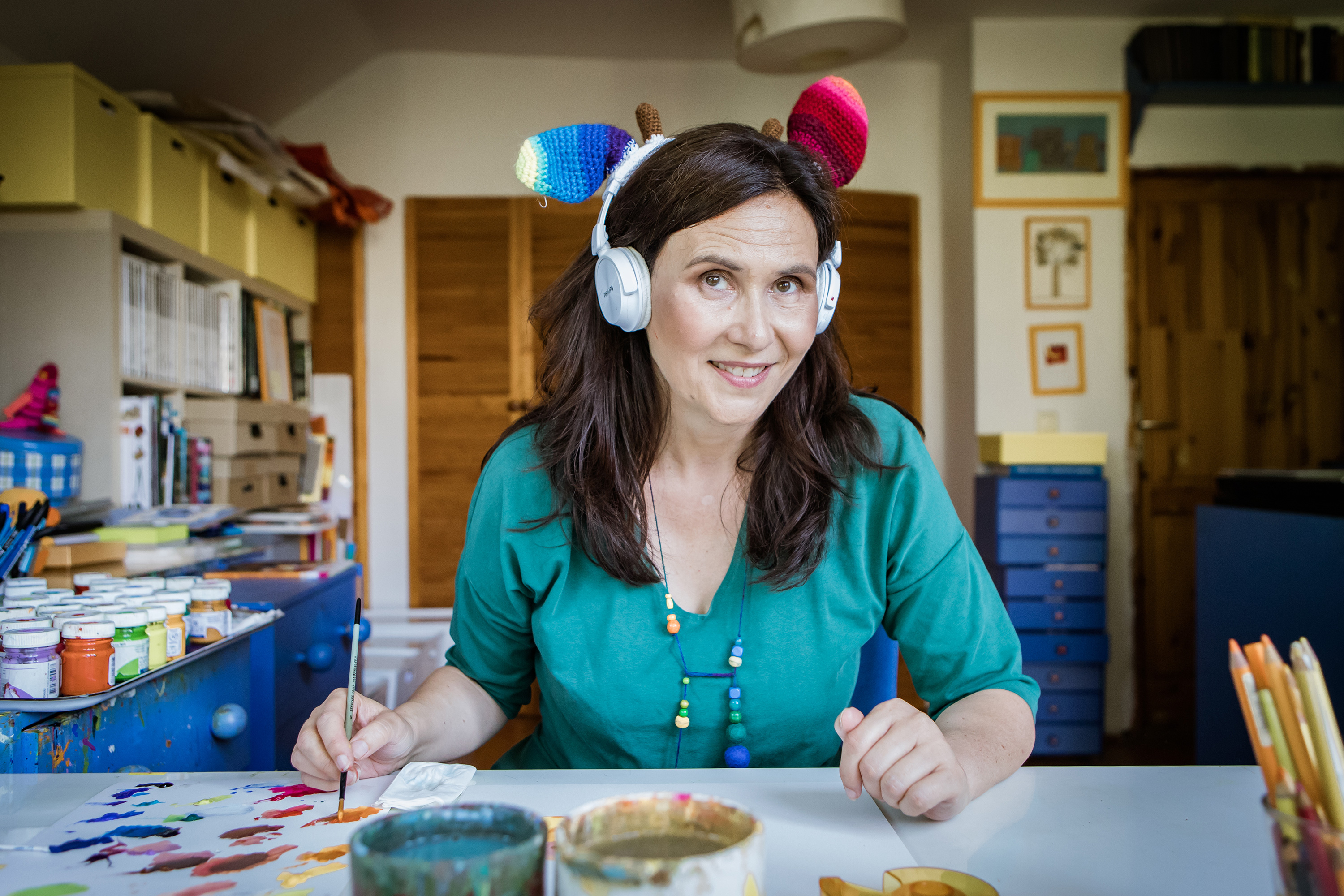
Rzeczy Piekne: I am glad that I can finally talkwith you face to face and say how happy I am that you let me andour photographer Bartek barge into your workshop, where we’re going to find out the secrets of illustrator job and have a peek at your work. How come the joy of creationdoesn’t ever leave you?
Elzbieta Wasiuczynska: You know, in this joy of creation there’s also fatigue and disappointment and boredom and back pain and thicker and thicker glasses. Still, it’s the area of freedom and joy, the alternate reality that you build on your own terms.
If I were to wrap up your work in few words, I would say: incredibly vivid creativity on the individual level. This inner need for creation must be very strong for you. Was It like that from the start, from the moment you realized that you can’t do without a sketchbook, pencil, brush and paints?
EW: It’s a no-go without my eyes. Artifacts are just a way to let off some steam. The effect of transforming visible matter. I think I was born with hungry eyes like this.
And what do these hungry eyes absorb the most?
EW: Really simply – they need beauty and contemplation.
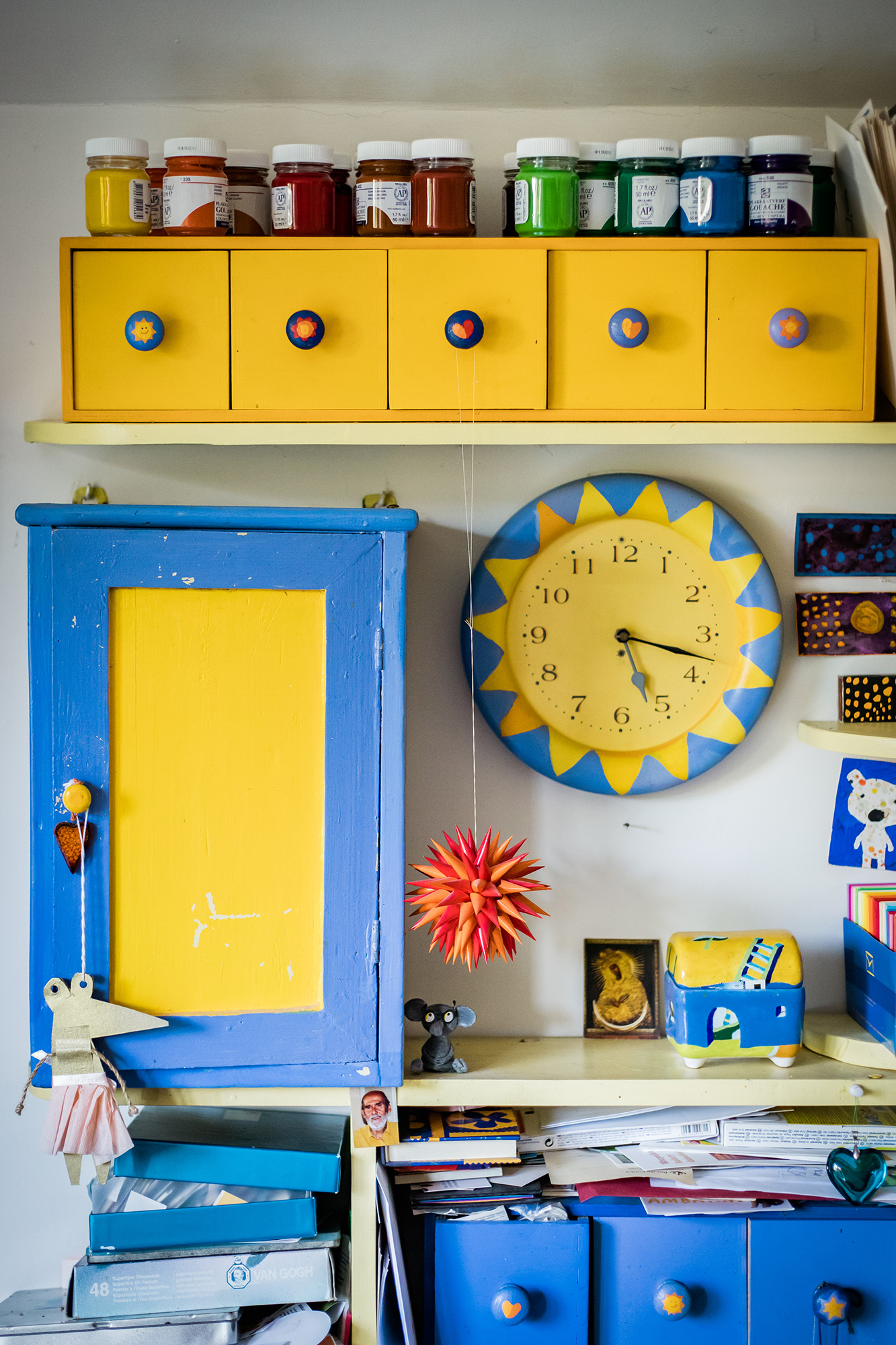
I’m trying to imagine little 6, 7 years old Ela. When you were growing up the world was pretty grey, it was the PRL [the Polish People’s Republic] era. Children were raised outdoors, in the nature, having fun together on carpet hangers, playing hopscotch, and their biggest secret was having so-called angels made in the ground from colored pieces of glass, under which you could find compositions of flower petals and grass, tin foil and shiny beads. Do you have any vivid memories from your childhood? Was it a happy time?
EW: I was a non-stop lost in thoughts chubby klutz, always standing nose-to-nose with a miracle: a wildflower, a moss on a trunk, a petrol rainbow in a puddle, a collection of foreign buttons in my grandma’s drawer. Childhood for me is more likea set of images rather than scenes or dialogues. I remember a grey man that I saw through a window, he was holding a gigantic bouquet of balloons that were glowing with colors; shadows on curtains; cars’ lights creeping on a celling. I remember the absolute pleasure of watching how one watercolor paint burstinto the other, the utter happiness when I received a cool set of markers. Since forever, since I was little, I liked the smell of poster paints, wood of freshly sharpened crayons or grey canvas. It’s not that I’ve always known I would end up painting one day, I just did.
Now, when you paint illustrations or create book characters out of beads, do you look at the world through the eyes of a child? I know it sounds cliché but I’m asking about the openness and awareness – these children’s traits that differentiate them from adults.
EW: To be honest I’m allergic to those wimpy phrases that are repeated like a hiccup when talking about children-oriented art: ‘the artist preserved his inner child and their fairytale-like life and art area string of good luck’. It’s as accurate as a cliché that there’s nothing better for an artist than tuberculosis, poverty, living in an attic or some other tragedy.
Do you have a book from your childhood that you come back to with fondness?
EW: I’m careful with coming back to favorite books from childhood because you can be greatly disappointed.
Why is that? This kind of books are the most memorable, they activate imagination that can open the world of unknown to a child.
EW: And let them stay there, in the fond memory. You can lose a favorite book from your childhood when you read it with an adult, analytical eye.
What kind of books do you like?
EW: I like books (for children and for adults too) that are insightful, visionary, witty, original, stimulating imagination, forcing to think, wooing with language, surprising with structure, making you understand others, yourself, the world.
Was the decision to becomean illustrator a youthful impulse or a mature choice of the Academy of Fine Arts’ (pl. AkademiaSztukPięknych w Krakowie) graduate? I’m wondering when did you feel it for real, psychically.
EW: It was a very youthful impulse because I couldn’t even read at the time, and I went to school before my sixth birthday.
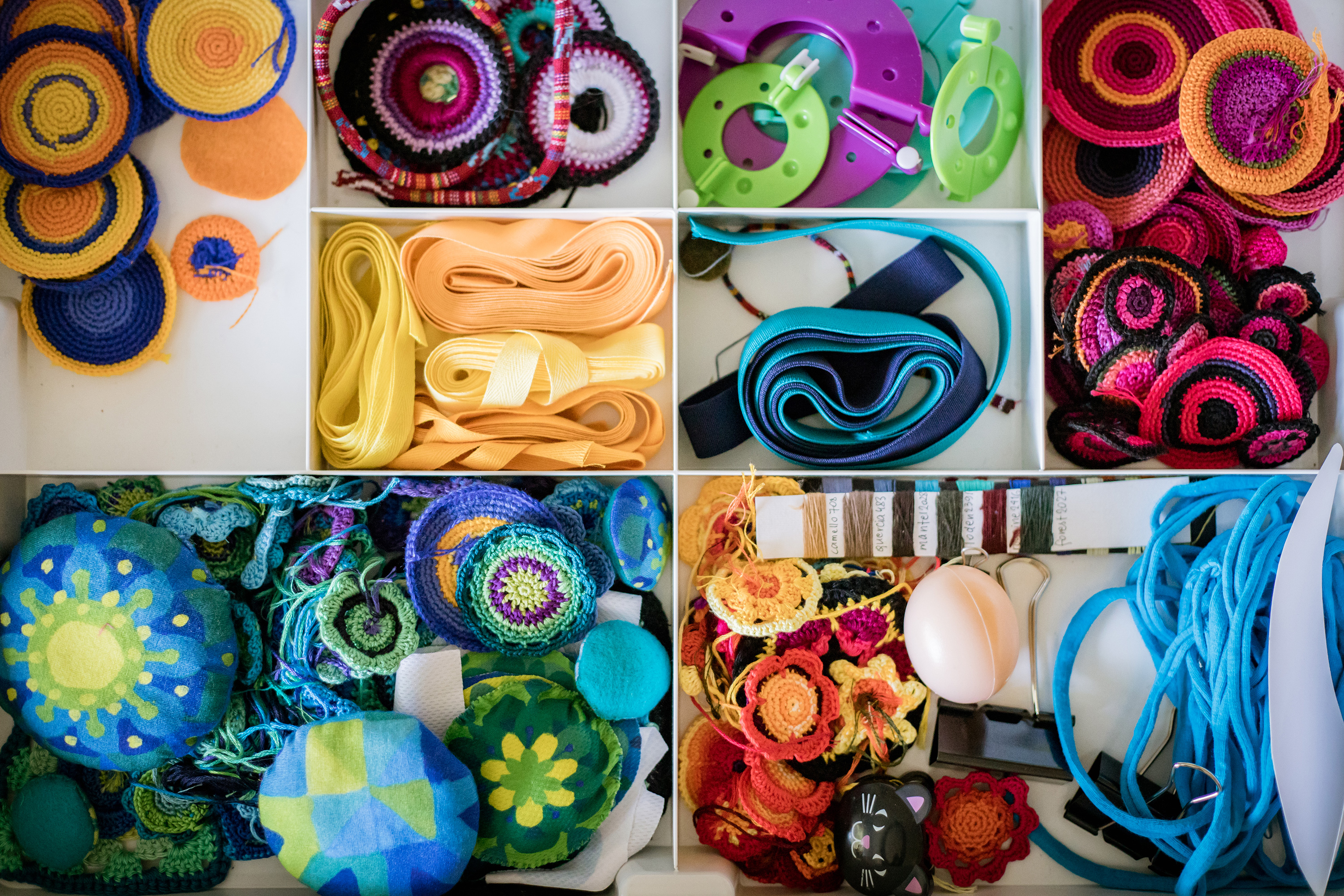
Indeed, very early 😊
Tell us about your beginnings in this profession.
EW: Those were very heroic beginnings. I was ready to squeeze a commission out of the editor by my fiery speech or shoving my juvenilia in his face. I think I got my first commission from Polish Music Publishing House(pl. PolskieWydawnictwoMuzyczne) thanks to my size (I was a head taller than the artistic director, and good 10 kilos heavier). Then I took my portfolio and went on a pilgrimage tomecca called Warsaw (pl. Warszawa), that’s where most of publishers were, and still are, located. I got a commission from ‘Dziecko’ magazine, then the next one, and that’s how it is to this day.
The illustrator job is for organized people. You have to stick to deadlines and be responsible. You’re a busy artist, you travel a lot, you meet with the readers, but I can’t really picture you planning all of this with notebook in hand.
EW: I write it all down on my calendar, I try really hard, but there are times some cumulations and catastrophes in timing occur and you just want to clone yourself because this one’s tempting, that one’s alluring, the other one’s interesting. Sometimes this littledrama in schedule– I should be doing two urgent things at once – makes me take up another one, that no one is waiting for, not commissioned. Some beast is eyeballing me from the inside of my sketchbook and relentlessly demanding his physical form. After a turbulent fight with my common sense I give in, because those totally random things are usually the most interesting. That’s how the series of embroidered cats happened, the one that gave life to Marcin Brykczyński’s poetry book ‘KOT TY JESTEŚ?’ (eng.CAT ARE YOU?), that’s how the series of embroidered half-dimensional dragons has been in the making for few years now, and it is to be included in my book.
‘Every movement of human hand is based on thinking’ – said German philosopher Martin Heidegger. Let’s compare it to the creative process in illustrator job. Does your hand draw and paint what your mind says or is your hand ‘at the service’ of your heart and intuition? Maybe your brush tells stories of your dreams?
EW: Well, maybe for Heidegger it’s about thinking, but it’s not the case at all for me. I work the best with my brain switched off, no overthinking, no theorizing. Intuition over intelligence.
What do you feel when you look at a blank sheet of paper, which is an infinite emptiness?
EW: I prefer not to let myself be hypnotized and intimidated, I dive in and see what happens. But it’s very hard for me to get to work on something big. First I’m all antsy for couple of days, like a wild dog dingo. When the idea for a new book is fermenting inside you, you can even go to such extremes as cleaning. You have to consider it when you enter the rocky path of artistic career.
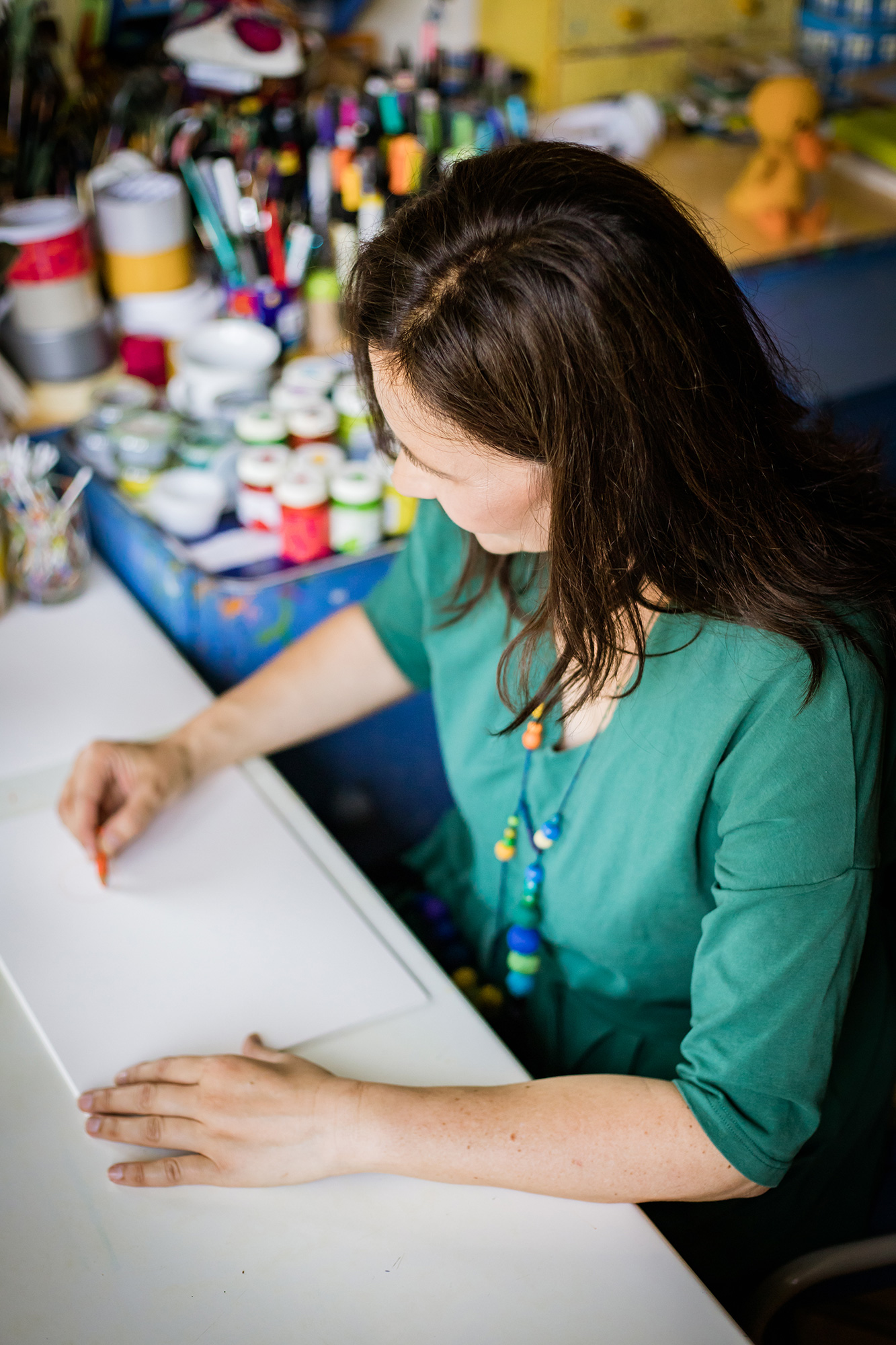
You use color to create atmosphere in the illustrated book and to show emotions of the characters. One can feel authentic lightness and skill in operating with colors in your artworks. Which painter is particularly close to your heart in terms of handling colors, who taught you to ‘play’ with them?
EW: I don’t think I learned it from painters. Color combination, creating ranges of colors, observing the nuances of colors in nature have always been a great joy for me. And my favorite colorists? Piotr Potworowski, Marc Chagall, Paul Klee and a whole crew of fellows from the Renaissance city of Venice.
Is there a place for Giovanni Bellini, Giorgione, Titian and Tintoretto in this ‘crew’?
EW: Sure, and for the older one – Paolo Veneziano.
Light and shadow are essential in feeling the depth. You build atmosphere in your works by using chiaroscuro. You do it like a master! Especially when it comes to landscapes.
EW: I still think that’s not it. It’s probably easier to catch a rabbit than a light in a painting. Just as Skaldowie bandused to sing:
‘Zniknie za wodą twarz fantastyczna.
Ale nie płaczmy, bo
nie o to chodzi, by złowić króliczka,
ale by gonić go.’
[eng. The fantastic face will disappear under the water.
But let’s not cry because
It’s not about catching a rabbit,
But chasing after it.]
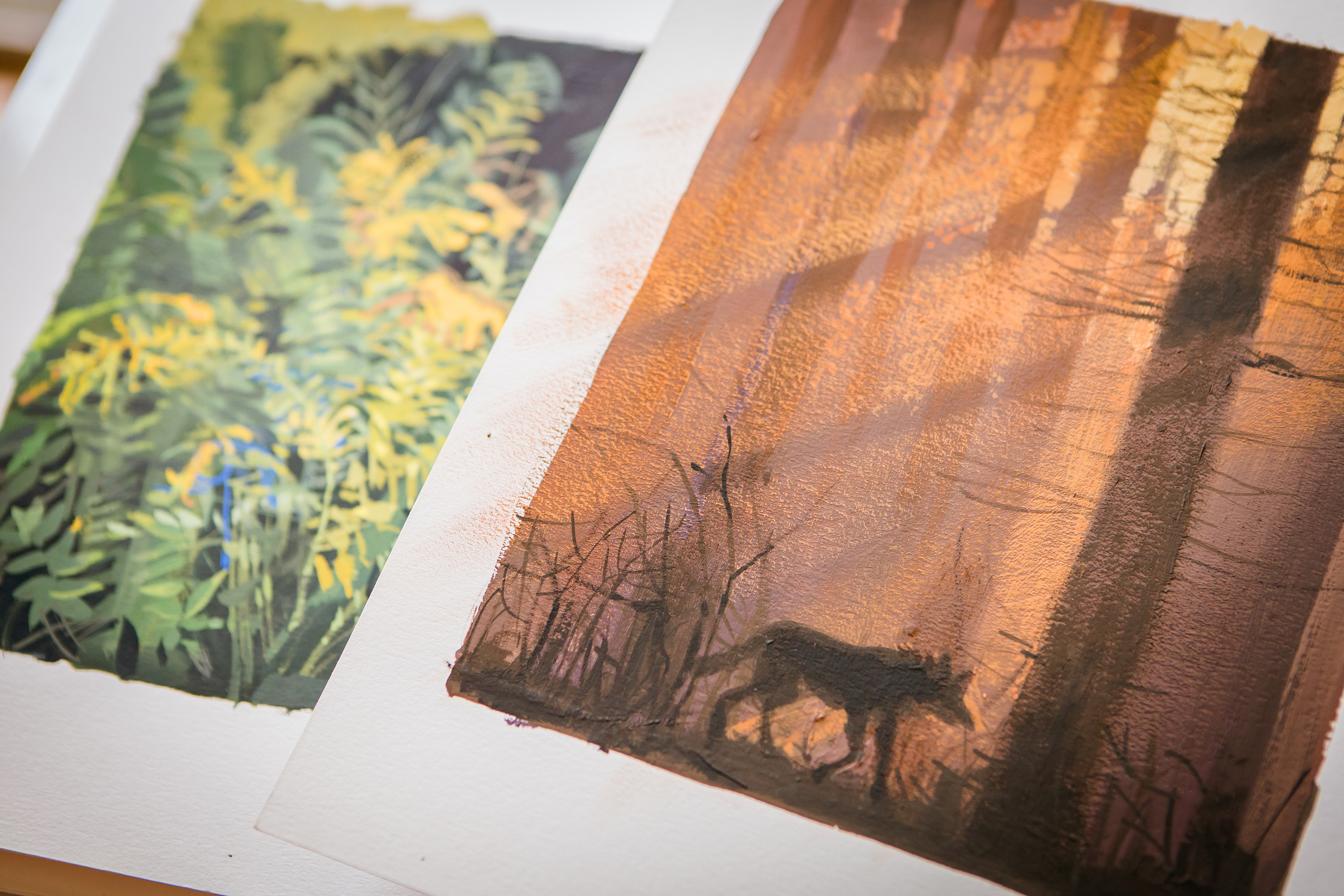
Your book illustrations are not digitally made and your artworks are closer to what every child likes to do: paint, draw, cut, glue. In my opinion, books made digitally aren’t really close to what a child likes to do. What do you think?
EW: When it comes to what makes a book attractive it’s not about the technique, but the talent and creativity of the illustrator.
What would you say to people interested in becoming an illustrator?
EW: I don’t have to encourage those who are really into it, and there’s no point in doing it with those who are unsure, indifferent.
Do you work when you’re travelling or relaxing, like sketch something or create your original characters? What are the strangest places or conditions you had to work in?
EW: If you consider sitting on a chair and painting/drawing/cutting/sewing a work – then I have no breathtaking story to tell, like: me with an easel on galloping stallion, the wind is blowing my crayons away on the top of Machu Picchu. But staring, compulsive thinking and writing down ideas, saving topics on photographs – for me it’s an addiction similar to breathing.
Polish children’s books are doing well at this moment. They’re visible, published, awarded all around the world. What do you thinkmakes modern Polish illustration so special?
EW: I might be too close to the topic to notice any pattern that distinguish our illustrations from – I don’t know – Estonian or French ones. The Internet is making trends, fashions, styles as contagious as a common cold. And equally attractive for me. But at the same time I know that if you work hard and honestly, from the heart, then you achieve something of your own. A lot of countries can take pride in their outstanding personas in the illustratorfield, not only us.
In the age of blindly racing technology, how can you make children look away from their smartphones and computer games and start reading more books?
EW: Ha! I wish I knew the secret. I don’t stop searching for this philosopher’s stone, for example during my art workshop with children.

We’re in Wegrzce near Cracow (pl. Kraków), in your beautiful apartment and workshop. Is it your place in the world? Or do you wish to settle down somewhere else? You love the color blue, azure, and sunshine so I thought about some kind of longing for warm parts of Europe and the world. Maybe I’m wrong…
EW: I’d love to live somewhere on the South of Europe for a year, like in Italy, take in all the colors, art, light, be properly and regularly bored, stay in some non-touristy place and time, but I know that I couldn’t move for good, I’d miss Polish colors of greenery, clouds, the sea.
Dorota, a mother of three boys, your faithful reader, asks: Ms. Ela, how would you illustrate the creation of the world?
EW: I’m not sure if I would go for a topic like that, but it’d be blue to the fullest😊
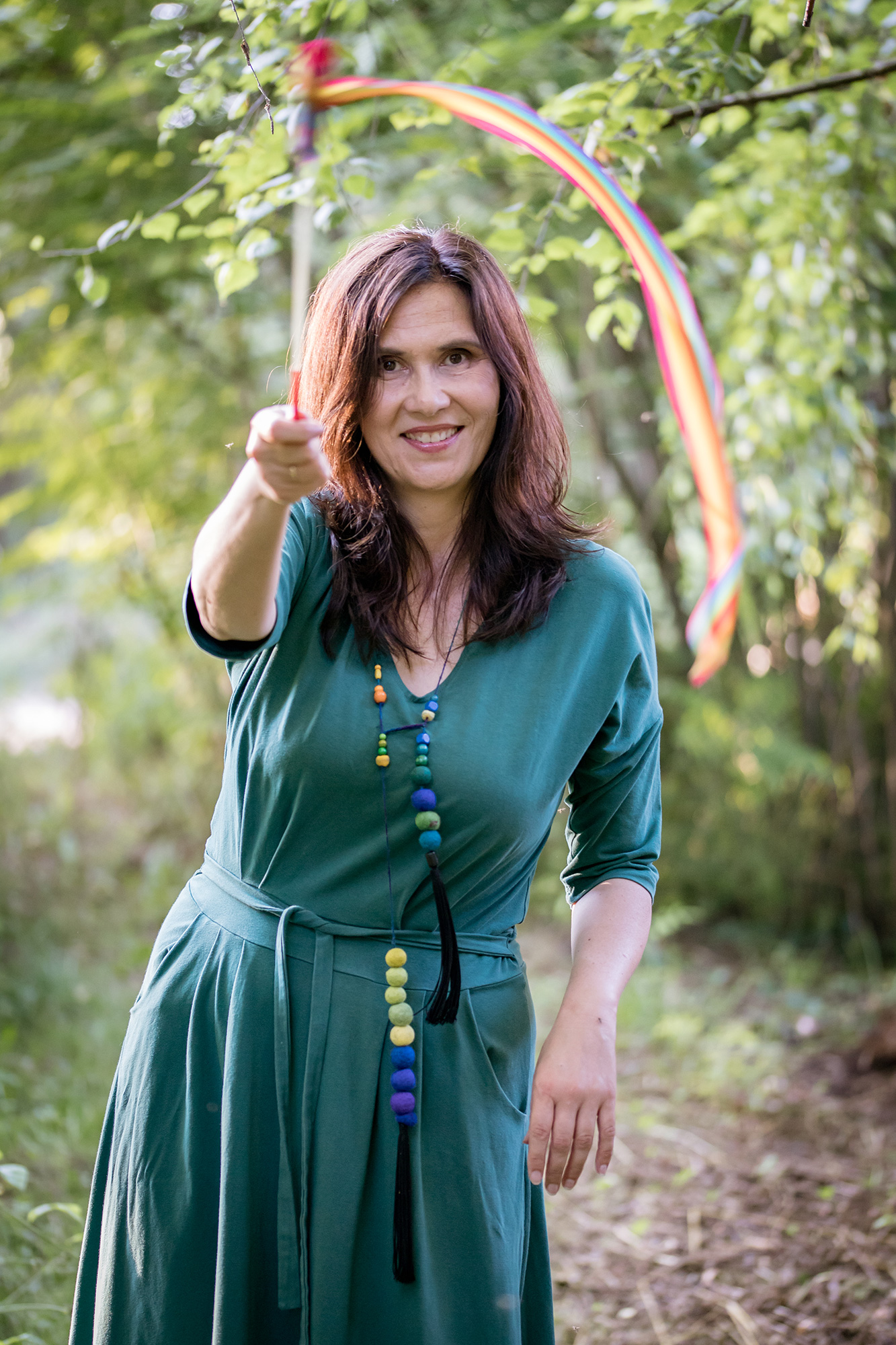
Lastly, I would like to ask you a something not related to art. How can we save the world, what can we do for our planet?
EW: Oh, you have to ask a wise man, a public worker, a philosopher, not a good man with a brush in their hand like me. I cultivate my own land, a small piece of earth, the best I can. I can only hope that it brings joy not just for me.
Ela, we wish you all the new challenges in work and… we’re anticipating a book for adults with your illustrations.
Interview from June, 2019.
Interviewer: Joanna Zawierucha-Gomułka / Rzeczy Piękne
Photos: Bartosz Cygan © Rzeczy Piękne
Translator: Dagny Zawierucha
Ela Wasuczyńska’s website > www.wasiuczynska.blogspot.com
The project is financed by ‘Stypendium Twórcze Miasta Krakowa’

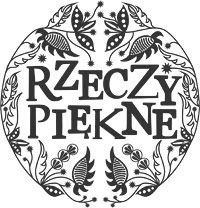





Comments: no replies